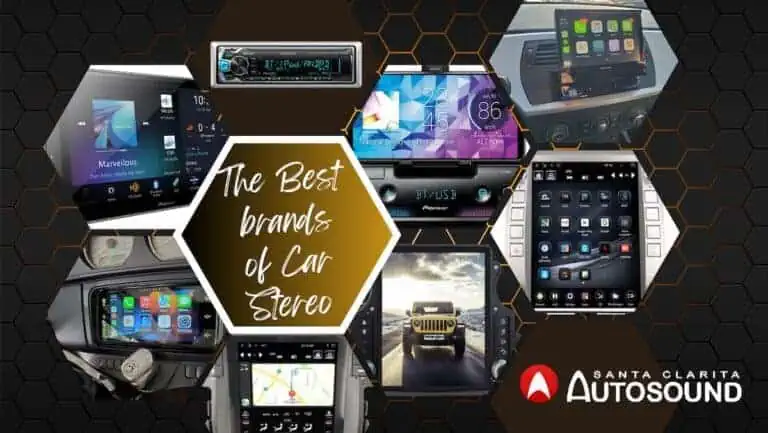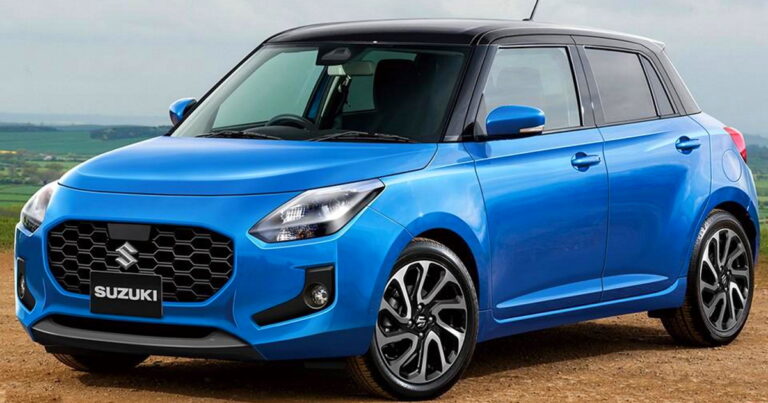Car Stereo Brands: Your Ultimate Guide to Enhancing Your Drive
Car Stereo Brands: Your Ultimate Guide to Enhancing Your Drive cars.truckstrend.com
The roar of an engine, the open road, and the perfect soundtrack – for many, these are the ingredients for an ideal driving experience. While the first two are often intrinsic to the vehicle itself, the soundtrack is entirely within your control, largely determined by the quality and features of your car stereo system. Far more than just a radio, a car stereo, or head unit, is the command center for your in-car entertainment, dictating everything from audio fidelity and connectivity to navigation and multimedia playback.
Choosing the right car stereo brand is a pivotal decision that can profoundly impact your daily commute or long-distance journeys. It’s not just about picking a name; it’s about investing in a brand’s legacy of innovation, sound engineering, reliability, and user experience. With a bewildering array of options available, understanding the landscape of car stereo brands is essential to making an informed choice that resonates with your preferences, budget, and vehicle. This comprehensive guide will delve into the world of car stereo brands, helping you navigate the choices and unlock the full potential of your in-car audio.
Car Stereo Brands: Your Ultimate Guide to Enhancing Your Drive
The Heartbeat of Your Drive: Understanding Car Stereo Brands
From the rudimentary AM/FM radios of yesteryear to today’s sophisticated multimedia hubs, car audio has undergone a dramatic evolution. Early car stereos were simple devices, primarily designed for basic radio reception. The advent of cassette players, then CD players, revolutionized in-car entertainment, offering personal music collections on the go. Today, we’ve moved beyond physical media, embracing digital files, streaming services, and seamless smartphone integration via technologies like Bluetooth, Apple CarPlay, and Android Auto.
At the core of this evolution are the brands that drive innovation. A car stereo brand represents a philosophy – be it focused on uncompromised sound quality, cutting-edge features, robust durability, or unparalleled value. When you select a brand, you’re not just buying a piece of hardware; you’re buying into their reputation, their research and development, their customer support, and their specific approach to enhancing your driving soundtrack. Understanding these nuances is the first step toward building the perfect audio environment in your vehicle.
Decoding Brand Categories: What Defines Them?
Car stereo brands can broadly be categorized based on their market positioning, target audience, and primary strengths. While there’s often overlap, this classification helps in narrowing down choices based on your priorities.
1. Premium/Audiophile Brands
These brands cater to enthusiasts who prioritize pristine sound quality, advanced audio processing capabilities, and superior build materials above all else. They often feature high-end Digital Signal Processors (DSPs), audiophile-grade components, and a focus on detail and clarity that rivals home audio systems.
- Examples: Alpine (high-end models), Focal (speakers/amplifiers), JL Audio (subwoofers/amplifiers/speakers), Audison (amplifiers/processors), McIntosh (select high-end OEM and aftermarket).
- Characteristics: Uncompromising sound fidelity, extensive sound tuning options, robust construction, often higher price points.
- Best For: Serious audiophiles, those building custom high-fidelity systems.

2. Mainstream/Mid-Range Brands

This is the largest and most competitive segment, offering a balanced blend of features, performance, and value. These brands are known for their innovation in connectivity (Apple CarPlay, Android Auto), user-friendly interfaces, and reliable performance suitable for the average consumer.
- Examples: Pioneer, Kenwood, Sony, JVC, Clarion.
- Characteristics: Wide range of products, excellent feature sets (touchscreens, Bluetooth, USB, app integration), good sound quality for the price, strong market presence.
- Best For: Most consumers seeking a significant upgrade over factory systems, modern features, and solid performance without breaking the bank.

3. Budget-Friendly Brands
These brands focus on affordability, providing essential functionalities at entry-level price points. While they may not offer the same level of sound refinement or advanced features as their more expensive counterparts, they are ideal for basic upgrades or replacing a broken factory unit on a tight budget.
- Examples: Boss Audio, Pyle, Dual, Planet Audio.
- Characteristics: Lower price, basic functionality (Bluetooth, USB, AM/FM), suitable for simple system replacements.
- Best For: First-time upgraders, older vehicles, or those with very limited budgets who need basic audio functions.
4. OEM (Original Equipment Manufacturer) Brands
These are the premium audio systems designed and installed by car manufacturers, often in collaboration with specialized audio companies. While not sold directly as aftermarket head units, understanding their influence is key, as they often set benchmarks for integrated systems and some components might be available in the aftermarket.
- Examples: Bose, Harman Kardon, Bang & Olufsen, Burmester, Meridian (often found in luxury vehicles).
- Characteristics: Seamless integration with vehicle aesthetics and electronics, custom-tuned for the specific car cabin, often include proprietary technologies.
- Best For: Owners of new vehicles who appreciate factory integration and are satisfied with the installed premium audio.
Key Factors to Consider When Choosing a Car Stereo Brand
Selecting the right car stereo brand involves more than just picking a popular name. It requires a careful consideration of several factors aligned with your personal needs and vehicle specifications.
- Sound Quality vs. Features: Do you prioritize pristine audio reproduction above all else, or are modern features like Apple CarPlay, Android Auto, and seamless smartphone integration more important? Some brands excel in audio fidelity (e.g., Alpine, Focal), while others lead in feature innovation and user interface (e.g., Pioneer, Kenwood).
- Budget: Define a realistic budget. This will immediately help you narrow down the brands and models. Remember to account for potential installation costs, wiring harnesses, dash kits, and steering wheel control interfaces.
- Vehicle Compatibility: Ensure the head unit fits your car’s dash (single-DIN or double-DIN). Modern vehicles often require specific wiring harnesses and interface modules to retain factory features like steering wheel controls, backup cameras, and premium sound system integration. Reputable brands usually have wide compatibility, but specific models might be better suited for certain vehicles.
- Brand Reputation & Reliability: Research a brand’s track record for durability, customer service, and warranty support. Online reviews and forums can offer valuable insights into real-world performance and longevity. A brand with a strong reputation for reliability minimizes future headaches.
- Specific Features You Need:
- Smartphone Integration: Apple CarPlay and Android Auto are game-changers, offering safe access to navigation, music, messages, and calls.
- Bluetooth: Essential for wireless audio streaming and hands-free calling.
- USB/AUX Inputs: For playing music from external devices or charging.
- Navigation: Built-in GPS or smartphone-driven navigation.
- DSP (Digital Signal Processor): For advanced sound tuning, time alignment, and equalization.
- HD Radio/Satellite Radio: For expanded content options.
- Camera Inputs: For front or rear view cameras.
- Installation Complexity: While many mainstream units are designed for relatively straightforward installation, some advanced units or specific vehicle integrations might require professional expertise. Consider whether you plan a DIY installation or will rely on a car audio specialist.
Spotlight on Leading Car Stereo Brands: What They Offer
Let’s take a closer look at some of the most prominent brands and what sets them apart:
- Pioneer: A true industry giant, Pioneer is synonymous with innovation. They consistently push boundaries with user-friendly interfaces, excellent multimedia capabilities (especially with Apple CarPlay/Android Auto), and a wide range of products from budget-friendly to high-end. Their sound quality is generally excellent for the price, and their products are known for reliability.
- Kenwood: Another powerhouse, Kenwood often competes head-to-head with Pioneer. They are highly regarded for their robust build quality, strong sound processing, and comprehensive multimedia features, including advanced connectivity options. Many users praise Kenwood for its intuitive touchscreens and reliable performance.
- Alpine: Often considered a premium choice, Alpine excels in delivering superior sound quality and advanced audio processing. Their units are known for their clean power output, detailed sound reproduction, and extensive sound tuning capabilities. While they might be pricier, the audio fidelity often justifies the investment for audiophiles. They also offer large-screen "Restyle" systems that seamlessly integrate into specific vehicle dashboards.
- Sony: Leveraging its vast electronics expertise, Sony offers car stereos that are user-friendly, reliable, and integrate seamlessly with other Sony devices. Their units often feature excellent display quality, good smartphone integration, and a clean, balanced sound profile, offering great value across various price points.
- JVC: Often grouped with Kenwood (they are part of the same parent company, JVCKenwood), JVC car stereos are known for offering a solid feature set and good performance at competitive prices. They are a reliable choice for those seeking a feature-rich head unit without breaking the bank, often excelling in multimedia playback.
- Focal/JL Audio (Components): While not primarily known for head units, these brands dominate the high-end speaker, amplifier, and subwoofer market. If you’re building a truly audiophile-grade system, you’ll likely pair a premium head unit (from Alpine or Pioneer) with components from Focal (renowned for their accurate and detailed speakers) or JL Audio (famous for powerful and precise subwoofers and amplifiers).
- Clarion: With a long history in car audio, Clarion is known for its durable products, often favored for marine applications due to their robust design. They offer a range of head units with solid performance and reliable features, appealing to those who value longevity and straightforward functionality.
Beyond the Head Unit: Building a Complete Audio System
Choosing the right car stereo brand is just the first step. For a truly immersive audio experience, consider how the head unit integrates with other components:
- Matching Components: The best head unit won’t sound great with poor speakers. Consider upgrading speakers, adding an external amplifier for more power and clarity, and a subwoofer for deep bass. Many brands offer complete ecosystems of matching components (e.g., Pioneer head unit, Pioneer speakers, Pioneer amp).
- Sound Deadening: Applying sound deadening material to doors and trunk can dramatically reduce road noise and vibrations, allowing your audio system to perform at its best by eliminating rattles and improving bass response.
- Professional Installation vs. DIY: While many basic head units can be DIY installed, complex systems involving amplifiers, multiple speakers, custom wiring, and advanced DSP tuning often benefit from professional installation. Experts ensure proper wiring, optimal component placement, and precise system tuning.
- Tuning and Optimization: Even a high-end system needs proper tuning. Utilizing the equalizer, time alignment, and crossover settings (often available on more advanced head units or external DSPs) can transform good sound into great sound, tailored to your vehicle’s acoustics and your personal listening preferences.
Navigating Challenges and Finding Solutions
- Compatibility Issues: Modern cars have complex electrical systems. Ensure you purchase the correct wiring harness, dash kit, and steering wheel control interface for your specific vehicle. Online resources and car audio specialists are invaluable here.
- Budget Limitations: If a complete overhaul is too expensive, consider a phased upgrade. Start with a quality head unit, then upgrade speakers, and finally add an amplifier and subwoofer as budget allows.
- Counterfeit Products: Always purchase car stereo equipment from authorized dealers or reputable online retailers to avoid counterfeit products, which may offer poor performance, reliability, and no warranty.
- Overwhelming Choices: Start by defining your absolute must-have features and your maximum budget. This will significantly narrow down the options and make the decision less daunting. Read reviews, watch comparison videos, and if possible, listen to different systems in person.
Car Stereo Brands: Representative Price Ranges
It’s important to note that prices vary greatly depending on the specific model, features, and retailer. The table below provides general estimated price ranges for common car stereo products across different brand categories. These are not exact figures but rather an indication of where different types of products from these brands typically fall.
| Brand Category | Example Brands | Typical Product | Estimated Price Range (USD) | Key Characteristics |
|---|
- An engaging introduction that defines Car Stereo Brands and its importance or relevance.
- Several well-defined main sections that delve into different aspects of Car Stereo Brands. These sections should have clear headings and cover key information, benefits, how-to guides, important considerations, types/categories (if applicable), tips, and potential challenges or solutions related to Car Stereo Brands.
- Practical advice and actionable insights for the reader regarding [TITLE].
- A concluding summary that reinforces the main points and offers a final thought on Car Stereo Brands.
- Create a table price containing all complete information about Car Stereo Brands.
- A Frequently Asked Questions (FAQ) section addressing common queries about Car Stereo Brands.
- The overall tone should be informative, helpful, and engaging for someone seeking to understand or learn more about Car Stereo Brands. Please ensure the article is well-organized and easy to read.
Car Stereo Brands: Your Ultimate Guide to Enhancing Your Drive
The roar of an engine, the open road, and the perfect soundtrack – for many, these are the ingredients for an ideal driving experience. While the first two are often intrinsic to the vehicle itself, the soundtrack is entirely within your control, largely determined by the quality and features of your car stereo system. Far more than just a radio, a car stereo, or head unit, is the command center for your in-car entertainment, dictating everything from audio fidelity and connectivity to navigation and multimedia playback.
Choosing the right car stereo brand is a pivotal decision that can profoundly impact your daily commute or long-distance journeys. It’s not just about picking a name; it’s about investing in a brand’s legacy of innovation, sound engineering, reliability, and user experience. With a bewildering array of options available, understanding the landscape of car stereo brands is essential to making an informed choice that resonates with your preferences, budget, and vehicle. This comprehensive guide will delve into the world of car stereo brands, helping you navigate the choices and unlock the full potential of your in-car audio.
The Heartbeat of Your Drive: Understanding Car Stereo Brands
From the rudimentary AM/FM radios of yesteryear to today’s sophisticated multimedia hubs, car audio has undergone a dramatic evolution. Early car stereos were simple devices, primarily designed for basic radio reception. The advent of cassette players, then CD players, revolutionized in-car entertainment, offering personal music collections on the go. Today, we’ve moved beyond physical media, embracing digital files, streaming services, and seamless smartphone integration via technologies like Bluetooth, Apple CarPlay, and Android Auto.
At the core of this evolution are the brands that drive innovation. A car stereo brand represents a philosophy – be it focused on uncompromised sound quality, cutting-edge features, robust durability, or unparalleled value. When you select a brand, you’re not just buying a piece of hardware; you’re buying into their reputation, their research and development, their customer support, and their specific approach to enhancing your driving soundtrack. Understanding these nuances is the first step toward building the perfect audio environment in your vehicle.
Decoding Brand Categories: What Defines Them?
Car stereo brands can broadly be categorized based on their market positioning, target audience, and primary strengths. While there’s often overlap, this classification helps in narrowing down choices based on your priorities.
1. Premium/Audiophile Brands
These brands cater to enthusiasts who prioritize pristine sound quality, advanced audio processing capabilities, and superior build materials above all else. They often feature high-end Digital Signal Processors (DSPs), audiophile-grade components, and a focus on detail and clarity that rivals home audio systems.
- Examples: Alpine (high-end models), Focal (speakers/amplifiers), JL Audio (subwoofers/amplifiers/speakers), Audison (amplifiers/processors), McIntosh (select high-end OEM and aftermarket).
- Characteristics: Uncompromising sound fidelity, extensive sound tuning options, robust construction, often higher price points.
- Best For: Serious audiophiles, those building custom high-fidelity systems.
2. Mainstream/Mid-Range Brands
This is the largest and most competitive segment, offering a balanced blend of features, performance, and value. These brands are known for their innovation in connectivity (Apple CarPlay, Android Auto), user-friendly interfaces, and reliable performance suitable for the average consumer.
- Examples: Pioneer, Kenwood, Sony, JVC, Clarion.






